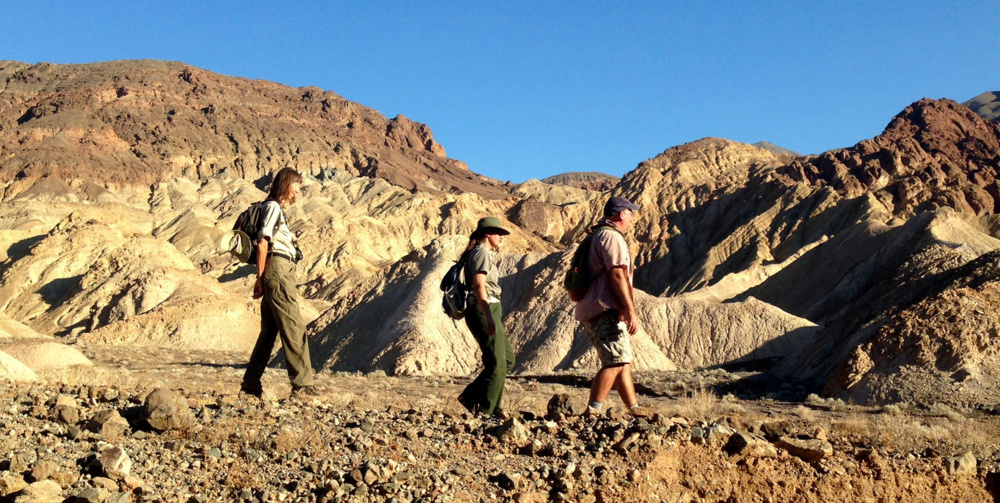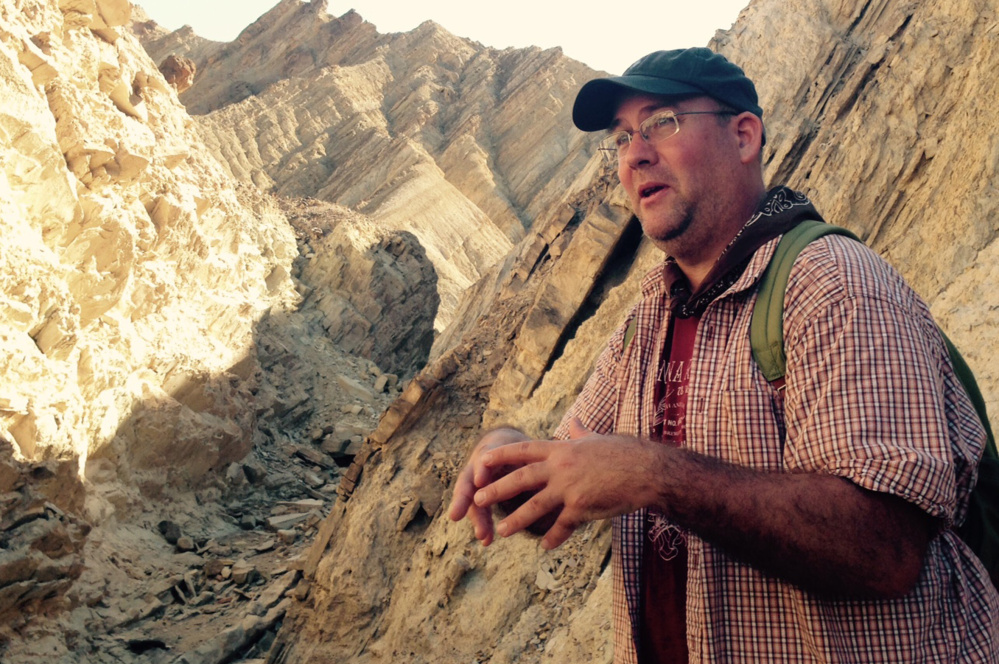DEATH VALLEY NATIONAL PARK, Calif. — Paleontologists call it “The Barnyard,” a remote box canyon in an inhospitable desert where slabs of mud stone as big as billboards are indented with fossil tracks left by mastodons, camels, horses and cats the size of leopards.
It is one of the largest, most diverse and well-preserved deposits of prehistoric mammal and bird tracks known to exist, and a window onto the ecology of Death Valley during the Pliocene Epoch, about 5 million years ago, when things were starting to heat up.
The prints tell stories, frozen in stone, of an adult camel with a newborn following close behind; of a horse slipping in soggy ground and landing on its backside; of mastodon herds following the scent of water before climate change and tectonic forces transformed the region into the hottest, driest place on Earth.
Between the footprints of mega-fauna are the thread-thin lines of bird tracks, and fossilized shoreline features including ripples and raindrop impressions.
“This canyon is as good as it gets — there are fossil tracks almost everywhere you look,” said Torrey Nyborg, a Loma Linda University paleontologist who this month completed the first inventory of the tracks and is helping the National Park Service devise formal plans to protect and manage them.
Formal protections have been a long time coming for the canyon, which the park service has hidden from public view since 1940, fearing that information about it would invite theft or destruction by vandals and visiting hordes.
Even now, officials ask that the exact location not be divulged in news stories. Visitors are required to get a permit and be accompanied by a federal ranger or designated naturalist.
To reach the canyon on a recent Sunday, Nyborg, naturalist Birgitta Jansen and park ranger Abby Wines tramped up a 3 1/2-mile-long trail, following a path through a labyrinth of sheer-walled canyons where the temperature can soar above 120 degrees.
Rounding one last turn, Jansen smiled and said, “We’ve arrived. Welcome to The Barnyard.”
The profusion of tracks range from about 1 to 15 inches in length. Paleontologists have matched them with mastodons, one species of tapir, 12 species of birds, five species of cats, five species of camels and three species of horse.
Their prints were not created simultaneously. They were made in successive layers of mud that settled along the shores of a spring-fed lake that was a magnet for generations of migrating mammals and birds.
“The springs dried up after tectonic activity began pushing the landscape upward,” Nyborg said. “The tracks changed into mud stone. Over time, layers of mud stone were folded and uplifted by tectonic forces, exposing the arrays of fossil tracks we see today.”
Using high-definition cameras and GPS coordinates, it took Nyborg four years to inventory the tracks spread across five square miles of rugged terrain. Erosion and landslides destroy countless tracks each year — and expose new ones, he said.
In some cases, thieves have used chisels to hack off and cart away fossil tracks that took eons to form. The incidents are among many examples of vandalism in the 5,270-square-mile national park visited by more than 1 million people each year from around the world.
Send questions/comments to the editors.




Success. Please wait for the page to reload. If the page does not reload within 5 seconds, please refresh the page.
Enter your email and password to access comments.
Hi, to comment on stories you must . This profile is in addition to your subscription and website login.
Already have a commenting profile? .
Invalid username/password.
Please check your email to confirm and complete your registration.
Only subscribers are eligible to post comments. Please subscribe or login first for digital access. Here’s why.
Use the form below to reset your password. When you've submitted your account email, we will send an email with a reset code.